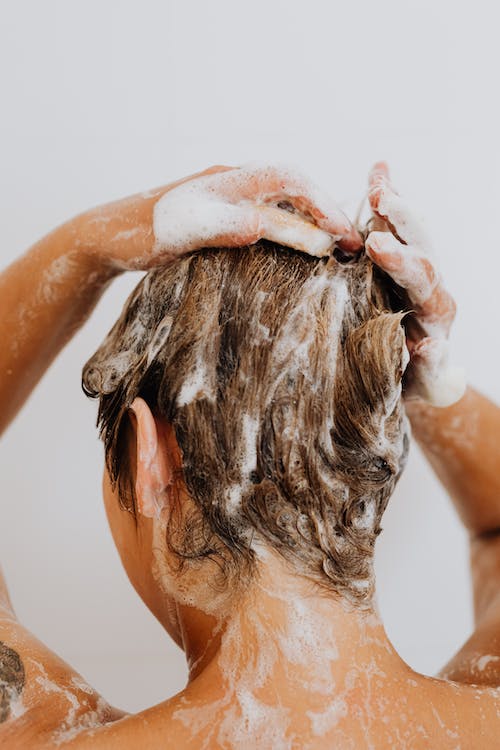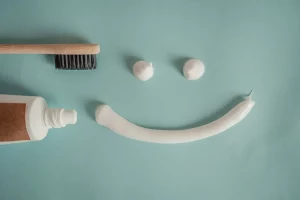How to Get Rid of Dandruff: A Step-by-Step Guide


How to Get Rid of Dandruff: A Step-by-Step Guide


Introduction:
Dandruff is a common scalp condition that affects millions of people worldwide. It is characterized by the presence of white flakes on the scalp and can often cause itching and discomfort. While dandruff is not a serious medical condition, it can be embarrassing and affect self-confidence. In this step-by-step guide, we will explore effective methods to get rid of dandruff and achieve a healthier scalp.
1. Understanding Dandruff
Dandruff is caused by various factors, including the overgrowth of a yeast-like fungus called Malassezia, seborrheic dermatitis, dry skin, or sensitivity to hair care products. Understanding the underlying cause is crucial for effective treatment.
1.1 What Causes Dandruff?
Dandruff can be triggered by hormonal imbalances, poor scalp hygiene, a weakened immune system, or certain medical conditions. Identifying the root cause helps in choosing the right treatment approach.
1.2 Differentiating Dandruff from Other Scalp Conditions
It is essential to differentiate dandruff from other scalp conditions such as psoriasis or eczema. Knowing the characteristics and symptoms of dandruff will guide you in selecting appropriate treatment options.
2. Scalp Hygiene
Maintaining good scalp hygiene is essential for preventing and treating dandruff. Proper cleansing techniques, regular shampooing, and avoiding harsh hair products are key aspects of scalp hygiene.
2.1 Regular Shampooing
Frequent shampooing helps remove excess oil, dead skin cells, and dandruff flakes from the scalp. Use a mild shampoo that suits your hair type and dandruff condition.
2.2 Proper Scalp Cleansing Techniques
Gently massage the shampoo into your scalp using your fingertips, avoiding the use of nails to prevent scalp irritation. Thoroughly rinse your hair and scalp after shampooing.
2.3 Avoiding Harsh Hair Products
Some hair care products can irritate the scalp and exacerbate dandruff. Opt for gentle, sulfate-free shampoos, conditioners, and styling products to minimize irritation and dryness.
3. Anti-Dandruff Shampoos
Anti-dandruff shampoos are specifically formulated to target the causes of dandruff. They often contain active ingredients like zinc pyrithione, ketoconazole, selenium sulfide, or coal tar.
3.1 Selecting the Right Anti-Dandruff Shampoo
Choose an anti-dandruff shampoo that matches your specific scalp condition and hair type. Look for ingredients that combat fungal growth, reduce inflammation, and provide scalp moisturization.
3.2 How to Use Anti-Dandruff Shampoos Effectively
Follow the instructions on the shampoo bottle carefully. Allow the shampoo to remain on your scalp for a few minutes before rinsing thoroughly. Consistent and proper use of the shampoo is important for optimal results.
4. Natural Remedies for Dandruff
Natural remedies can be effective alternatives to commercial anti-dandruff products. Here are some popular options:
4.1 Tea Tree Oil
Tea tree oil possesses natural antifungal and antibacterial properties. Dilute a few drops of tea tree oil with a carrier oil, such as coconut oil, and gently massage it into your scalp. Leave it on for 15-20 minutes before rinsing.
4.2 Apple Cider Vinegar
Apple cider vinegar helps balance the pH level of the scalp and reduce dandruff. Mix equal parts of apple cider vinegar and water, apply it to your scalp after shampooing, and rinse thoroughly after a few minutes.
4.3 Aloe Vera
Aloe vera has soothing and moisturizing properties that can alleviate dandruff symptoms. Apply fresh aloe vera gel directly to your scalp, leave it on for 30 minutes, and rinse thoroughly.
4.4 Coconut Oil
Coconut oil is known for its moisturizing properties and can help combat dryness and reduce dandruff. Massage warm coconut oil into your scalp, leave it on overnight, and wash your hair the next morning.
5. Lifestyle Changes
Certain lifestyle factors can contribute to dandruff. Making the following changes can help improve scalp health:
5.1 Stress Management
Stress can worsen dandruff. Incorporate stress-reduction techniques such as meditation, exercise, and engaging in hobbies to manage stress levels effectively.
5.2 Balanced Diet and Hydration
A balanced diet rich in vitamins, minerals, and omega-3 fatty acids promotes scalp health. Drink an adequate amount of water daily to keep your scalp and body hydrated.
5.3 Regular Exercise
Regular exercise improves blood circulation, which is essential for maintaining a healthy scalp. Engage in physical activities to enhance overall well-being and scalp health.
6. Seeking Professional Help
If dandruff persists despite trying various home remedies, it may be necessary to consult a dermatologist for further evaluation and treatment options.
6.1 Dermatologist Consultation
A dermatologist can accurately diagnose the underlying cause of your dandruff and recommend appropriate treatment options tailored to your specific condition.
6.2 Prescription Medications
In severe cases, a dermatologist may prescribe medicated shampoos, topical creams, or oral medications to effectively treat dandruff.
7. Maintaining a Dandruff-Free Scalp
Once you have successfully treated your dandruff, it is important to maintain a healthy scalp to prevent its recurrence. Practice good scalp hygiene, continue using gentle hair care products, and make appropriate lifestyle choices.
Conclusion: Getting rid of dandruff requires a comprehensive approach that includes maintaining scalp hygiene, using anti-dandruff shampoos, trying natural remedies, making lifestyle changes, and seeking professional help when necessary. By following the step-by-step guide provided in this article, you can achieve a healthier, dandruff-free scalp and regain your confidence. Remember to be consistent and patient in your efforts, as results may take time








